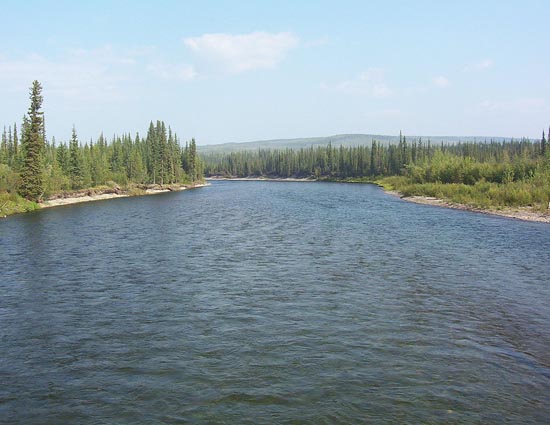Weird Story- The River That Holds Ample Of Gold In It
By: Priyanka Maheshwari Mon, 21 Aug 2017 7:35:15

The Klondike Gold Rush was an event of migration by an estimated 100,000 people prospecting to the Klondike region of north-western Canada in the Yukon region between 1896 and 1899. It’s also called the Yukon Gold Rush, the Last Great Gold Rush and the Alaska Gold Rush.
Gold was discovered in many rich deposits along the Klondike River in 1896, but due to the remoteness of the region and the harsh winter climate the news of gold couldn’t travel fast enough to reach the outside world before the following year. Reports of the gold in newspapers created a hysteria that was nation-wide and many people quit their jobs and then left for the Klondike to become gold-diggers.
Because of the harsh terrain and even harsher weather, it took gold rushers a year to reach the Klondike. The long climb over mountainous terrain and frozen rivers, coupled with the intense cold and frequent snowstorms, made for a long and arduous journey. Each of prospector was told they’d need at least enough food for a year by authorities in Canada so they wouldn’t starve.

In the summer of 1898, gold rushers arrived in the Klondike region by the thousands. Around 30,000 of the 100,000 or so prospectors that set out for the Klondike actually made it there. Many gave up to due to the difficulties of the journey and returned home; some were not able to survive the extreme temperatures and died. Those that made it to the Klondike still had their work cut out for them, as the gold was not easy to find or extract.
Mining was challenging due to pretty unpredictable distribution of gold and digging was slowed by permafrost. Because of this, there were minors that decided to buy and sell their claims so they could build an investment on the backs of others. Along the routes different towns sprung up and where given the name 'boom towns.'





